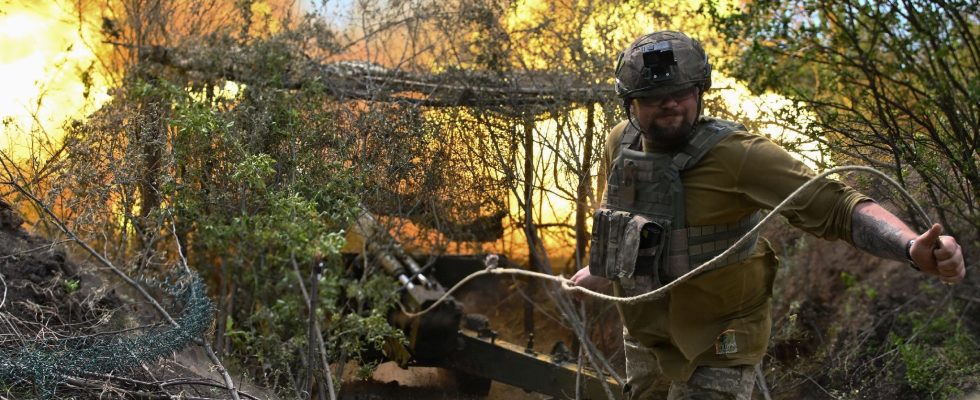About sixty kilometers south of Bakhmout, like a feeling of déjà vu on the front line. In Avdiivka, a small town in the Donetsk oblast, as in the industrial city taken hard by Wagner’s mercenaries last May, the Russian forces face, in a hell of mud and fire, the fierce resistance of the Ukrainians. At the beginning of October, Moscow launched a vast offensive against this Ukrainian stronghold, whose suburbs have bordered the front line for nine years. Conquered by the separatists in 2014, it was liberated by kyiv a few months later.
“This city poses a permanent threat to the city of Donetsk [capitale de l’oblast du même nom], which the Russians have occupied since 2014 and is only about fifteen kilometers away, underlines General Nicolas Richoux, former commander of the 7th armored brigade. Taking Avdiivka would be [pour Moscou] a way to regain defensive depth and reduce the risk of bombardment in this strategic area.” In addition to being welcome news for the Kremlin leader, whose forces have not recorded significant success since the capture of Bakhmout Six months ago.
Slow progress
After almost two months of efforts, Russian forces have gradually managed to advance on its flanks, particularly around the towns of Vodiane, to the south, and Stepové, to the north. The objective of the maneuver: to try to encircle the Ukrainian bastion in a pincer movement. “At this stage, a salient has been created, points out General (2S) Jérôme Pellistrandi, editor-in-chief of the National Defense Magazine. It is likely that the Russians will try to close it in order to trap the defenders at Avdiivka, or force them to retreat out of the city.”
This slow progress is nonetheless paid at a high price by Moscow. “The occupiers continue to replenish their bloodless units with prisoners,” Brigadier General Oleksandr Tarnavskyi, commander of Ukrainian forces in the region, said on November 28. These so-called “special contingents” are considered expendable by the command. Russian who uses them as cannon fodder during assaults.” Sent tirelessly in small groups of 10 to 20 fighters, they then found themselves trapped by Ukrainian artillery.
On November 10, the Ukrainian chief of staff, Valery Zalouzhny, estimated Russian losses in the area at nearly 10,000 men (dead or wounded), around a hundred tanks and some 250 other armored vehicles. “The Russian command remains mediocre and compensates a lot, as during the Second World War, by the mass effect, underlines General Richoux. In the same way as in Bakhmout, human waves are sent to attack one another. after the others to gain a few meters, without worrying about losses.”
“The city is nothing more than a pile of stones”
The number of Russian daily losses thus rose on average to 931 in the month of November, according to the Ukrainian general staff, compared to a previous record of 776 per day, in March 2023, at the height of the offensive against Bakhmut. . “The last six weeks have probably seen some of the highest Russian casualty rates of the war so far,” confirms a British intelligence memo, dated November 27.
These would not be due solely to the resistance of the Ukrainians. “We have information according to which the Russian army is executing soldiers who refuse to obey orders,” indicated the spokesperson for the National Security Council of the United States John Kirby at the end of October. We also have information that Russian commanders are threatening to execute entire units if they seek to retreat in the face of Ukrainian artillery fire.”
In this cemetery-like town – once known for housing the largest coking plant in Ukraine – there are today only 1,500 inhabitants (out of 30,000). “The objective of the Russians is now mainly symbolic, gauges General Pellistrandi. The city is nothing more than a pile of stones. Given the sacrifices made by Moscow, any capture of the city will at this stage only be a Pyrrhic victory.” Like in Bakhmout, six months earlier.
.
